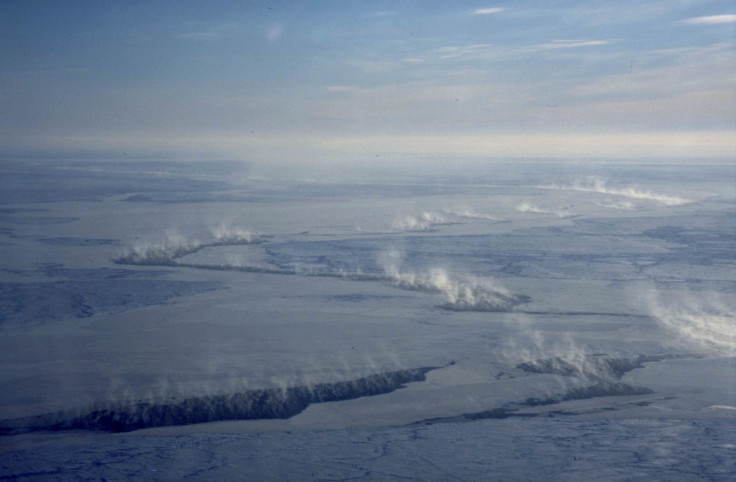Nasa: Cracking Arctic Sea Ice Increasing Risk of Mercury Poisoning

Cracking sea ice off the Alaskan coast is leading to an increased risk of mercury poisoning as more of the toxic pollutant enters the food chain, a Nasa field campaign has found.
Scientists found that large cracks in Arctic sea ice lead to vigorous mixing in the air above, which pumps atmospheric mercury down to the surface.
This leads to more mercury entering the food chain where it can cause health problems in fish and the animals that eat them – including humans. Exposure to mercury can cause damage to the brain, kidney, and lungs, as well as several diseases.
The team measured increased concentrations of mercury near ground level after sea ice had cracked, causing open seawater channels called "leads".
The mercury-pumping reaction occurs because open water in a lead is warmer than the air above it.
Nearly all the mercury in the Arctic atmosphere is transported there in gas form from areas further south. When mercury, in its gaseous form, is near ground level, it deposits the element on the surface. Once all the mercury is removed from the air, the reaction stops.
Study author Chris Moore, of the Desert Research Institute in Nevada, explained that the temperature difference causes the air above the lead to be churned up – similar to the air above boiling point.
"The mixing is so strong it actually pulls down mercury from a higher layer of the atmosphere to near the surface," he said.
Leads have become more common across the Arctic Ocean due to climate change reducing the sea ice cover: "Over the past decade, we've been seeing more new sea ice rather than perennial ice that has survived for several years. New ice is thinner and saltier and cracks more easily. More new ice means more leads as well," said Son Nghiem, a scientist at Nasa's Jet Propulsion Laboratory in California.
The team took ground-based measurements of mercury over the Chukchi Sea and used images from Nasa's Terra satellite to observe sea ice. They also used a National Oceanic and Atmospheric Administration model of air transport to work out what was upwind of their mercury readings.
Daniel Obrist, study co-author, said: "The 'aha' moment came when we combined the surface measurements with the satellite data and model. We considered a bunch of chemical processes and sources to explain the increased levels of mercury we observed, until we finally realised it was this pumping process."
Ngheim said their findings should help the Minamata Convention, a global treaty to curb mercury pollution. It has currently been signed by 94 nations since it was opened for signatures at the end of last year. "Once the Minamata Convention has been ratified and becomes international law, we expect this work to help assess its effectiveness," he said.
© Copyright IBTimes 2025. All rights reserved.






















